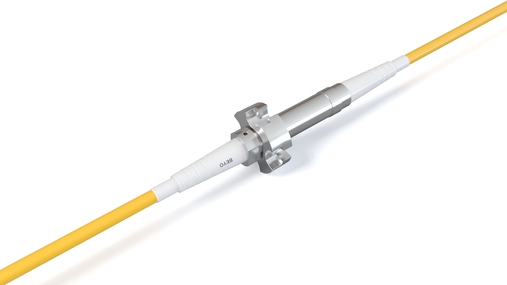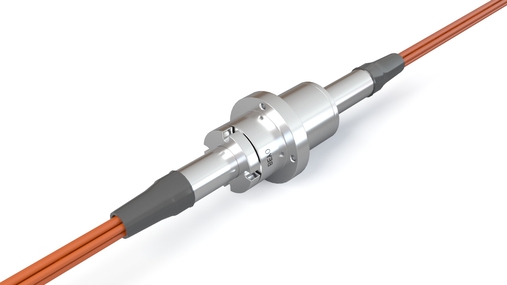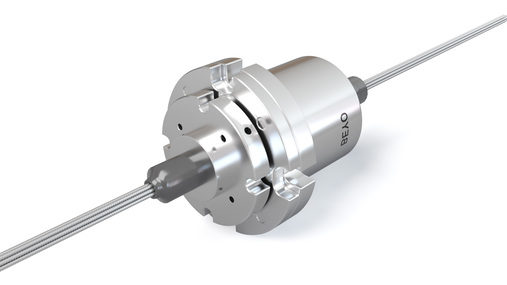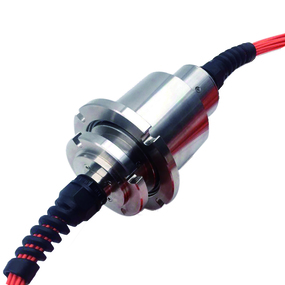

Application: Medical
Channel: 1
Wavelength: 650-1650nm
Insertion loss: <3dB
Max. speed: 10,000 rpm
Connector: FC/ST/SC/LC

Application: Radar/Antenna
Channel: 4
Wavelength: 850-1300nm
Insertion loss: <3dB
Max. speed: 1,000 rpm
Connector: FC/ST/SC/LC

Application: Satellite
Channel: 6
Wavelength: 1310-1550nm
Insertion loss: <3dB
Max. speed: 1,000rpm
Connector: FC/ST/SC/LC

Application: Robotics
Channel: 10
Wavelength: 850-1300nm
Insertion loss: <5dB
Max. speed: 500rpm
Connector: FC/ST/SC/LC

Application: Military
Channel: 16
Wavelength: 1310-1550nm
Insertion loss: <5dB
Max. speed: 500rpm
Connector: 9/125μm,50/125μm

Application: Automation
Channel: 20
Wavelength: 850-1300nm
Insertion loss: <5dB
Max. speed: 500rpm
Connector: FC/ST/SC/LC

Application: Defense
Channel: 26
Wavelength: 850~1300nm
Insertion loss: <5dB
Max. speed: 500 rpm
Connector: 9/125μm,50/125μm

Application: Defense
Channel: 31
Wavelength: 1310-1550nm
Insertion loss: <5dB
Max. speed: 500rpm
Connector: 9/125μm,50/125μm
What is a Fiber Optical Rotary Joint?
A fiber optic rotary joint/FORJ also called an fiber optic slip ring, which is a device designed to enable the transmission of optical signals across a rotating interface. It allows the transmission of optical signals across a rotating interface where optical fibers need to be connected between stationary and rotating parts of a system, while maintaining ongoing signal transmission.Fiber optic slip rings commonly used in various industries,including telecommunications,robotics, aerospace,defense,medical equipment,and industrial automation.
Beyotransfer has a wide range standard models to support single channel rotary joint and multi channels rotary joint,the advantages of FORJs as below:
High data rate and bandwidth transmission,making it suitable for large amounts of data transfer application, such as high-definition video,Ethernet and digital signals.
Low insertion loss: fiber optic rotary joints are designed to minimize signal loss during transmission to ensure high qualityoptical signals are maintained across the rotating interface.
Low crosstalk: fiber slip ring are engineered to minimized crosstalk between optical channels, preventing interference and maintaining signal integrity.
High rotational speed, the working speed for Beyotransfer’sFORJ up to 10,000rpm.
Supportsingle channel and multi channels(2-31 channels) fiber optic rotary joints on 360 rotating.
Compact design with light weight allowing for easy integration into systems with limited space and minimizingthe impact on overall system weight.
Low maintenance:our FORJs are built to be durable and require minimal maintenance, resulting in increased reliability and reduced downtime.
Available to integrate with FORJs and (1-96 rings)electrical slip ring together.
As a leading fiber optic rotary joint manufacture, Beyotransfer becomes possible to transmit high-bandwidth signals, such as video, data, and control signals, across rotating interfaces without the need for electrical contacts or wireless transmission. This makes FORJs a reliable and efficient solution for many applications that involve rotating machinery or systems.
A fiber optic rotary joint is a specialized device used in communication systems to transmit optical signals between stationary and rotating parts. It allows for continuous, uninterrupted data transmission in applications that require rotational movement.
Yes, our company specializes in the design and manufacturing of fiber optic rotary joints for various industries and applications.
A fiber optic rotary joint uses advanced optical technology to maintain a continuous connection between optical fibers on the stationary and rotating sides. This enables the transmission of data through the rotating interface without signal loss or interruption.
Industries such as aerospace, defense, medical imaging, robotics, and telecommunications often require fiber optic rotary joints for efficient and reliable optical signal transmission.
Our fiber optic rotary joints are designed to support various types of optical fibers, including single-mode, multi-mode, and specialty fibers. Please refer to our product specifications for detailed information.
Important factors to consider include the number of optical channels, insertion loss, return loss, rotational speed, temperature range, and environmental conditions. Our product catalog provides detailed specifications for each model.
Yes, we offer custom design services to meet the unique requirements of our customers. Our engineering team can work with you to develop a solution tailored to your application.
Our fiber optic rotary joints are designed to operate within specified environmental conditions. Factors such as temperature, humidity, and exposure to dust or contaminants may affect performance. Please refer to our product documentation for detailed environmental specifications.
To request a quote or place an order, please contact our Sales Support Representative. Be sure to provide specific details about your application, including the number of channels and any other special considerations.







Innovative technology and sophisticated experience, provide a range of slip rings and rotary joints, we are dedicated to provides the best & competitive solutions to valued customers.